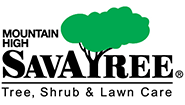 The damage caused by sod webworms is not at the root level, it is just above the roots in the thatch. Sod webworms prefer sunny areas and the larvae are often found on south facing, steep slopes and banks, where it is hot and dry. Heavily shaded turf is seldom attacked by the larvae.
The damage caused by sod webworms is not at the root level, it is just above the roots in the thatch. Sod webworms prefer sunny areas and the larvae are often found on south facing, steep slopes and banks, where it is hot and dry. Heavily shaded turf is seldom attacked by the larvae.
The most severe damage usually shows up in July and August when the temperature is hot and the grass is not growing vigorously. In fact, most sod webworm damage is mistaken for heat and drought stress. Sod webworm-damaged lawns may recover slowly, without irrigation and light fertilizations. These thin turf areas allow weeds to establish in the lawn making it unsightly.
Mountain High’s Lawn Care professionals can treat yards for sod webworm and other lawn insects. Click here to send us an estimate request, or call us at 303.232.0666.

Sod webworms appear to feed on all the common grasses. However, Kentucky bluegrass, perennial ryegrass, and fine fescues are the ones typically showing the most Damage. Tall fescue, though often attacked, usually out grows the damage.
The general thinning of turf is often times not associated with sod webworm activity, and thus, goes undiagnosed. The sod webworm caterpillars live in tunnels constructed in turf thatch or extending to the soil under the turf. These tunnels are silk lined and the webbing joins soil particles and leaves together. The larvae emerge from these burrows to chew grass blades off just above the thatch line, usually at night.
In thick, green turf, injury appears as small brown patches about the size of a quarter to three inches in diameter. When many larvae are present in mid-summer, the small brown patches run together and form large irregular, thin and brown areas.
Sod webworm adults are the telltale sign of future problems. They fly up out of the yard when the grass is walked on or mowed then quickly drat back into the grass. The adults are about 3/4-inch long, cigar-shaped and buff-colored moths. Two small snout-like projections are visible at the front of the head.
The adult moths fly mainly in late June and again in mid-August though some species may be present any time during the summer. Seeing these moths fly up while mowing or walking around the lawn does not confirm that damage is, or will be done by the larvae. The adult moths can fly considerable distances and may be coming from other infested areas.
The best way to look for the larva (worms) is to find a damaged/browning area and then get down on your hands and knees, take your two index fingers and part the grass blades in the area between dead and live grass and look for an area with small green pellets. The pellets, called frass, are the excrement of the larvae and indicate that a larva is close by.
Most sod webworm larvae are under one inch in length and are characterized by having a series of dark spots running down the body. However, some species have the spots light in color. Sod webworm usually have two generations per year with the summer generation of larvae causing the most damage. All the sod webworm larvae spend the winter as a partially grown larva buried several inches deep in the soil. At the approach of warm weather in the spring, the larvae move upward and begin feeding on the lush spring growth of grass. They finish their feeding in late May to early June.
At this time they burrow deeper into the thatch or soil to pupate. After 10 to 14 days, the new adult moths emerge at night to mate and lay eggs. The larvae from these eggs feed through July into early August before pupating again. The second generation of adult moths appears in late July through August. Since the turf is usually slowly growing at this time, sod webworm feeding can cause considerable damage. The second generation of larvae feed in September until October but damage is rarely detected because the turf has begun to grow rapidly again.
Mountain High’s Lawn Care professionals can quickly and effectively treat yards for sod webworm and other lawn insects. Call us at 303.232.0666 or click here to send us an estimate request.
